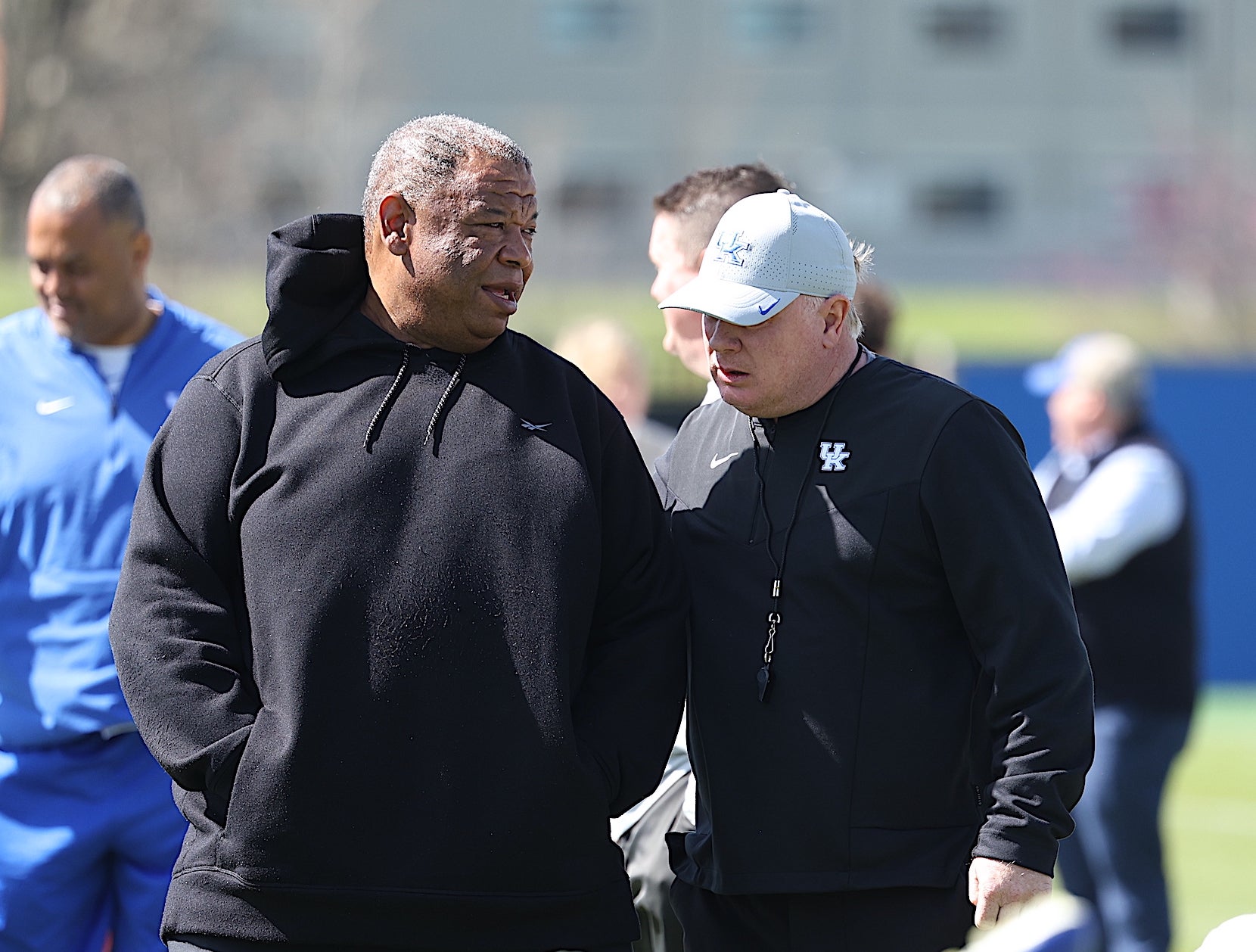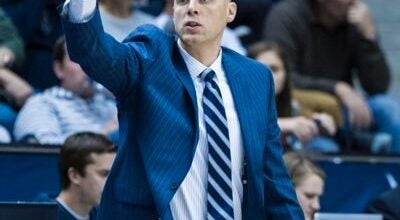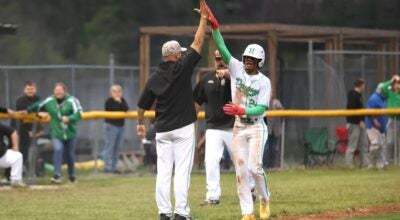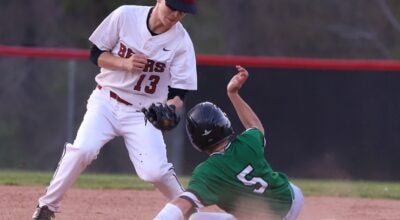Local teams to mark 100-year anniversary of football in county
Published 3:04 pm Tuesday, August 18, 2020
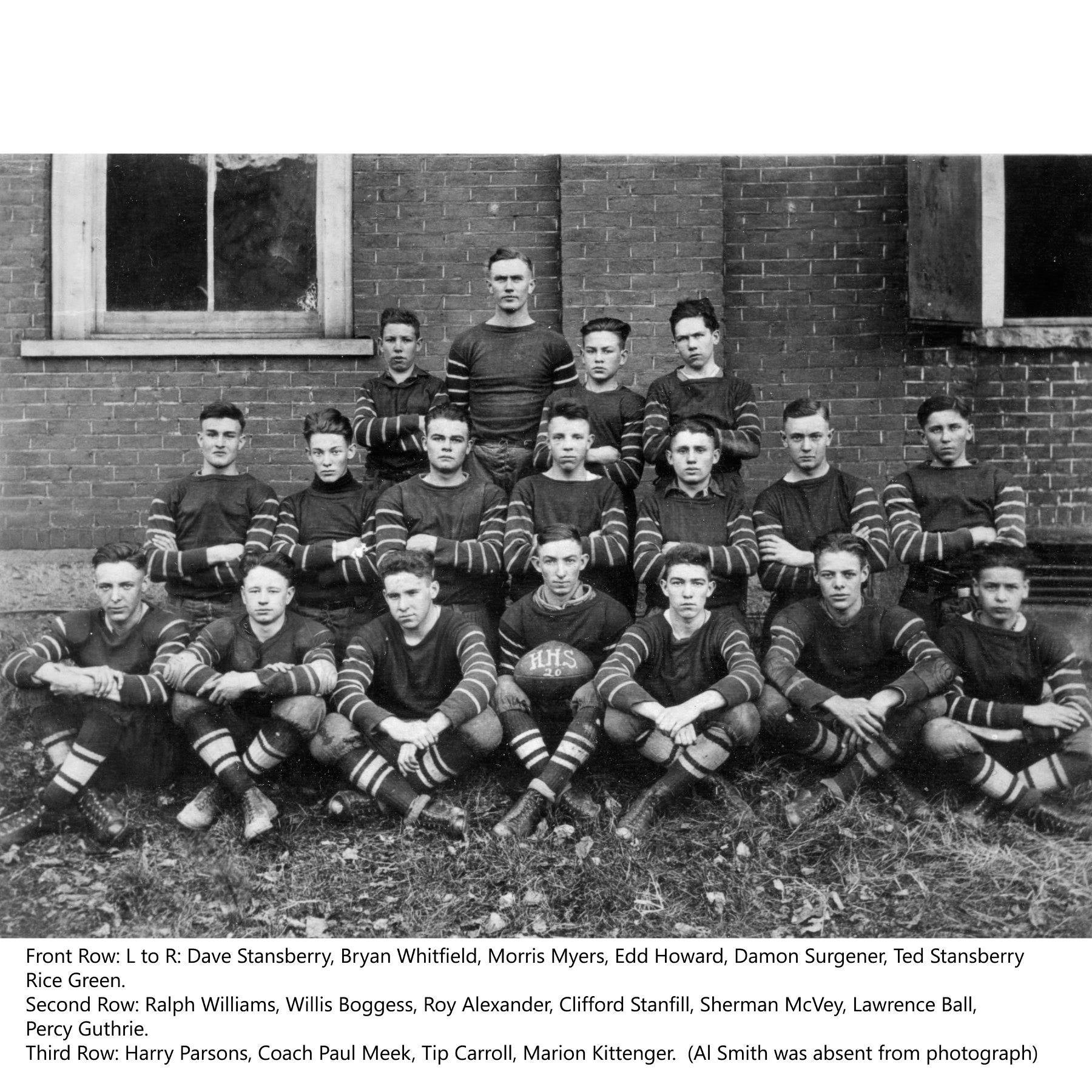
- The first Harlan High School football team in 1920 is pictured. The story ran in a 1983 football section of the Harlan Daily Enterprise.
|
Getting your Trinity Audio player ready...
|
By John Henson
Contributing writer
If football is played this fall, Harlan High School will mark a 100-year anniversary. The Green Dragons played only two games in that first season of 1920, both against Pineville, as former Harlan Daily Enterprise writer Mabel Collins details. This story was originally published on Aug.19, 1983.
“One hundred years of football at a tiny school like us is pretty amazing,” said Harlan coach Eric Perry. “My old high school coach at Frankfort was Raymond “Fleet” Webb, who is a Harlan alumni. I saw him couple years ago at a Harlan game and he was sporting his letterman jacket. Coach Webb is probably 80 years old. That tells you what Harlan football means to people.”
The following is the history of Harlan County football written in 1983.
———
Sixty-three years ago, Harlan’s first football coach, Paul Meek, pitched an oblong shaped ball to a bunch of eager boys on the courthouse square and said, “Boys, this is a football.”
Someone asked why it wasn’t round like all the other balls.
It so happened that one of the boys, Bryan Whitfield, had attended school at Sewanee Military Academy the year before and had seen a football.
The Dragons took it from there.
Twas the year of 1920, and those to follow were the golden years in which football was etched in the history and tradition of Harlan High School.
A field was available in Sunshine and the boys went over every day and rolled rocks off the field before practicing.
The first game held many memories.
Whitfield recalled that one end of the field was about three feet higher than the other.
Ruby Carter was one of the Harlan cheerleaders, and the Dragons were trying hard to score. They were on the 10-yard line and Ruby was shouting to “hold that line.”
Kyle Whitehead was the Harlan quarterback. Most of the team members were small. Whitfield weighed 135 pounds. Morris Myers was a little heavier.
“Tip” Carroll was a fan favorite, too. Damon Surgener played a few years before his brother, Chester. Roy Alexander and Percy Guthrie were among the 60-minute men.
The 1920s could have been dubbed the “Roarin’ 20s” at Harlan.
The Dragons played Pineville twice the first year because they were the only two teams between here and Richmond. Pineville won 25-19 on Oct. 29 and 21-6 on Nov. 14.
Pineville had an Aero Club, and during one of the games a plane flew over — “They beat us while we were looking up.”
Interest in football skyrocketed. Stores closed the day of the game and special cars were hooked on to the trains when the Dragons played in Somerset, Corbin and Richmond.
The years of 1923-25 produced some dandy teams. Some of the stars included Howard Christian, Josh Denham, Eb Meadors, “Foss” Brock and Gray Hoskins.
Christian recalled that the uniforms were pretty good “for the times.” He said they did have to buy their own shoes.
Those Dragons dedicated themselves to carry on the tradition that had been established.
Home games were played on Georgetown Park. There were very few seats and plenty of standing room.
One year, Harlan was getting ready for a big game here against Nicholasville. Harlan coach George Gumbert wasn’t skipping anything. The Nicholasville coach called Gumbert and asked him if he wanted them to bring some lime to line the field.
“Oh, yes, of course,” Gumbert said. That was all the Dragons needed to send them through the ceiling. Here came Nicholasville with the lime, and Harlan’s field had been lined for hours.
“We beat the socks off them,” Christian said.
Football was in its heyday in the late ‘20s and early ‘30s. New stars appeared on the horizon. The backfield was made up of Sid Siler, Chester Surgener and Dennis Saylor, a combination almost unbeatable.
Joe Gilly was an outstanding player and later a coach. Once after a game, he was walking across Georgetown bridge crying loudly.
“What happened, Joe?” a friend asked.
“We won,’” he answered.
———
Lynch East Main was destined to be the “biggest” little school in the mountains. Its football accomplishments began in the late 1920s.
Roy Bird was the first coach. Other early coaches included Paul O’Neil, Wayne Cusic and Charles Kennedy. Sam Potter came on the scene in the early 1940s, and he turned out some spectacular teams.
The Bulldogs had a 25-game winning streak at one point. They were Cumberland Valley Conference champions as early as 1941. Joe Hollingsworth and Harold Mullins were stars.
One of the best known Bulldog athletes was Jim Stanley, along with all-staters Bradley Mills and Bill Hollin.
Potter and Ed Miracle were the best known coaches. Miracle took his teams to the Class A playoffs many times and won four state titles while finishing second four times between 1959 and 1971.
———
Needham Saylor was a ruling dean of football since he coached teams at Wallins, Loyall and Cumberland, leading the Redskins to the state playoffs in 1963. Emanuel Saylor was the first coach at Wallins and introduced football there in the 1930s.
It was a tremendous task with skimpy facilities, but the rawbone talent was there just as it was scattered all over the county.
The old Kentenia baseball field was used. Goal posts were cut from poplar trees.
Nick, Dan and Bobby Osborne were early arrivers. The Abrahams, Bill and John R., teamed up with the Purple Devils. Some will remember Willard Saylor, Rab Weaver and Calvin Long.
The second football coach at Wallins was R.D. Lacey, and Charles Disney followed him.
Then came World War II and football was dropped for a while.
After the war, Needham Saylor revived it and produced some fine teams.
Johnny Y. Blanton, Charles Dozier, Tuney Scott, Lige Buell and “Red” Abraham were leaders of the Purple Devils.
Most of the Wallins games were played at Harlan.
“We went to Black Star one year,” a player remembered, “and when a player ran out of bounds he ran into a bunch of spectators.”
Despite inadequate uniforms, goal posts and other necessities, the Purple Devils left a mark and set many standards for others to follow. Their contribution to the school will last on and on.
———
Black Star, with little or no equipment, fielded some good teams after starting football in 1940.
Judge Howard was the first coach before moving to Lynn Camp. Hershel Giles and “Happy” Mayhew followed. Jim Goforth was a well known assistant. “Big Jim” Howard came on the scene in 1948. J.U. “Lock Jaw” Pike was there for three or four years.
The Eagles flew high from the onset of the sport. They boasted such players as George Lee, Charles (Duck Soup) Stepp, “Moody” Mays, H.T. Cornelius, Paul Carmony and the Woods brothers.
In about 1949, Earl Bradford led the Eagles, and Cleo Pursiful was there a short time before going to Bell County. Jack Ketcham and Bill Terrill served sprints.
In the early 1960s, the highly regarded Clarkie Mayfield was in the limelight kicking, passing and running with the pigskin. He cast his lot with Kentucky and became a big asset for the Wildcats.
Carl Howard, Tucker Smith, Levi Scott, Jim Walters, Gary Moore and Clayton Taylor also had their day in the sun at Black Star.
———
Rosenwald’s first football team was coached by Professor W.M. Woods. The Red Devils made their first appearance in about 1929. They climbed the mountain to the top of Ivy Hill practice. Harlan shared Georgetown Park with Rosenwald, as did Loyall and Black Star.
One of the outstanding running backs in the mountains was Rod Croley. He romped the gridiron with Lafayette Baker, Brice Sims and Ned Bradley.
In the late 1940s, Joe Kendall took over as coach and was one of the best, according to former players. Todd Walker led the Red Devils in 1951 and his team tied Pineville 19-19 and Evarts 6-6. Pete Turner was a talented halfback. Walter Lee Edwards and Ollie Bankhead were natural leaders.
———
The Benham Tigers caught football fever very early. Curt Matthis was the first coach in 1927. Milburn Taylor was at Benham for several years. One of the best known Tiger stars through the years was “Spider” Thurman.
Moran Galloway also played for the first team. Burton (Wendy) Aldridge, “Fats” Lambert and Dick Lentz carried the orange and black banner for years.
The team made road trips by train, and it was a two-day event. Charles “Big Man” Davis came to Benham and gave the fans a first-hand look at a new offense. Davis was an expert in running the “single wing.” His players were made to order. In fact, if teams didn’t have the “horses,” they shouldn’t try it.
The blocking of a Davis coached team was like precision drills. Roy Shumate worked with Davis for many years, and their 1-2 combination fit perfectly.
———
Tradition and just plain winning paved the way for the Evarts Wildcats. Tom Catron got the team started in 1926 and disbanded the following year. Team members said the Wildcats went to Emory, Va., for a game and when they returned one of the players suffered appendicitis. He grew worse and school officials reportedly believed that football was the cause of his death. The sport was dropped.
The game was revived in 1933 with Luther Tanner as the head coach. Herman Kelly was one of the premier quarterbacks. He teamed with Ross Barger, Grant Howard, Zester and Estil Bowling and others.
The Wildcats had enough athletes to compete with any team. Other coaches through the 1940s included Hershel Giles and Rufus Bailey. Charlie Hunter arrived in the 1950s and appeared calm, cool and collected, but he coped with jitters and butterflies before every game. His coaching no doubt influenced Perky Bryant, Don Parsons, the Hickses, Kenneth Parsons and the McCrearys, plus Homer Goins.
———
Lynch West Main began football in 1927 with V.B. Smith directing the “Blue Devils.” He was followed by M.F. Perkins, John B. Coleman and Leon McCreary.
Before Benham put a team on the field, some players joined Lynch West Main. The schools were very close. Ruben Palmer was one of the very best early players at West Main. Charlie and Lonzo Clark, Albert McKendrick, James Almon, William Brown and W.M. Davis were outstanding in their day.
The field, in the west end, was used for baseball also. One year, Rosenwald went to Lynch for a game and it was snowing knee deep. James Almon remembered the field was lined with coal dust.
Todd Walker was a Rosenwald team member at that time. He said the Red Devils won it 6-0. One of the Lynch players almost froze to death.
Leon Waldon, “Shay” Tinsley, Billy Ward and Warren Ricks saw many seasons come and go. Eugene Trailer and Joe Fulton played college ball at Kentucky State.
———
After Benham played with Lynch a few years, they put forth a team in about 1938 called the “Rams.” Joseph Matthew was the first coach, and Joe Kennedy came on a little later. “Juicy” Glover brought good fortune to the Rams. He also played at Kentucky State with Bernard Bickerstaff. Joe Perry, Arthur Perry and Jay McKnight were other team leaders.
———
It wasn’t until 1936 that Loyall High School had its own football team. After that, the Indians earned a lot of scalps. Bentley Lawson was the first coach and the practice field was in Rio Vista. A few early games were played near the National Coil site and some on Georgetown Park. One of the Indian players, Roy Shumate, recalled a game at Black Star in which they played from 1 p.m. to 6 p.m because the clock keeper didn’t know too much about it.
Edwin Lawson, Bailey Ball and Hubert Clifton carried the Indian banner. Parker Boggs, Sonny Thompson and Kim Wilson’s names belong in a prominent place at Loyall.
Cleo Pursiful and Archie Peace took turns as head coach for a few years, followed by Emmerson Warf. Needham Saylor came to Loyall in 1952 and produced some top-notch athletes who won their place as leaders in the Cumberland Valley Conference.
“Whitey” Burkhart was a hard-nosed player and Morton Boggs, Bill Criscillis, Don White, Jerry Wilhoit, Ken Parsons and Harold Patterson gave Indian fans something to cheer about. Odell Pursiful, Dan Bradley and Jimmy Jameson came on a little later.
———
Hall served as a high school for over 40 years before consolidation. Students came from Martins Fork, Catrons Creek, Mary Helen and several other camps in the area
Football made its debut at Hall in 1936. Ted Poe was the initial coach. One practice day he caught a “spy” in the hills trying to steal the Gamecock plays. H.C. Reaves was an early Hall standout. Jim T. Allen, a fine quarterback, was killed in World War II. Harold G. Ball, “Smokey” Ball and Norman Yarborough were in the lineup.
They held the limelight for several years and shared the honors with Roy Skidmore, Basil Mills, Gordon Parsons, Harold Ledford and “Pig” Walls. “Red” Simpson followed as coach, and Barney Wilson was there during the war years.
Like other schools, hardships were many. The players walked up the railroad track to the practice field. However, the Gamecocks had a football team that was important to them. It helped mold character and pride.
———
The whole county was dotted with teams by 1950. Cumberland was the 12th team to see action. Raymond “Red” Herndon was the first coach. Games were played in east Cumberland. The practice area was in the New York section. Ira Fields Jr., one of the initial leaders, recalled that Cumberland played a postseason game against Benham the first year and won 6-0.
J.C. Cartmill was the second coach at Cumberland. Harold Shrout came later, then the new field was built on the hill.
Roy King and Needham Saylor had huge seasons with the Redskins. Vince Stagnolia and Bill Hagy were a pair of the best. Ben Landrum, Hubert Gilliam, Ben Taylor and Ron Cain were standouts.
They started late but it didn’t take the Redskins long to catch on. Saylor had one of the best groups to work with including Lawrence Peavy, a huge boy who was strong as an elephant and gentle as a lamb. Mike Granato was a three-sport star who did everything well. Other leaders were Enoch Foutch, Johnny Cain and “Red” McKnight.
———
The latest team to hit the field, No. 13, was the Cawood Trojans. Coach Charlie “Big Man” Davis had the cream of the crop from Black Star, Wallins, Loyall and Hall when the schools consolidated in 1966. Davis brought along his “Man Friday” Roy Shumate. Some of the ring leaders were Freddy Brigmon, Bobby Day, Tony Cox, Don Roby and Ken Taylor.
Davis remained in charge until the fall of 1968 when he became assistant principal and Wendell Wheeler took over. He led the Trojans four seasons and turned out some fine players. Tim Saylor and Rick Fox went on to play college football — Saylor at UK and Carson-Newman and Fox at Morehead. Bright stars who played for Wheeler were Howard Farmer Jr., Carson Struck and Ken Crider.


